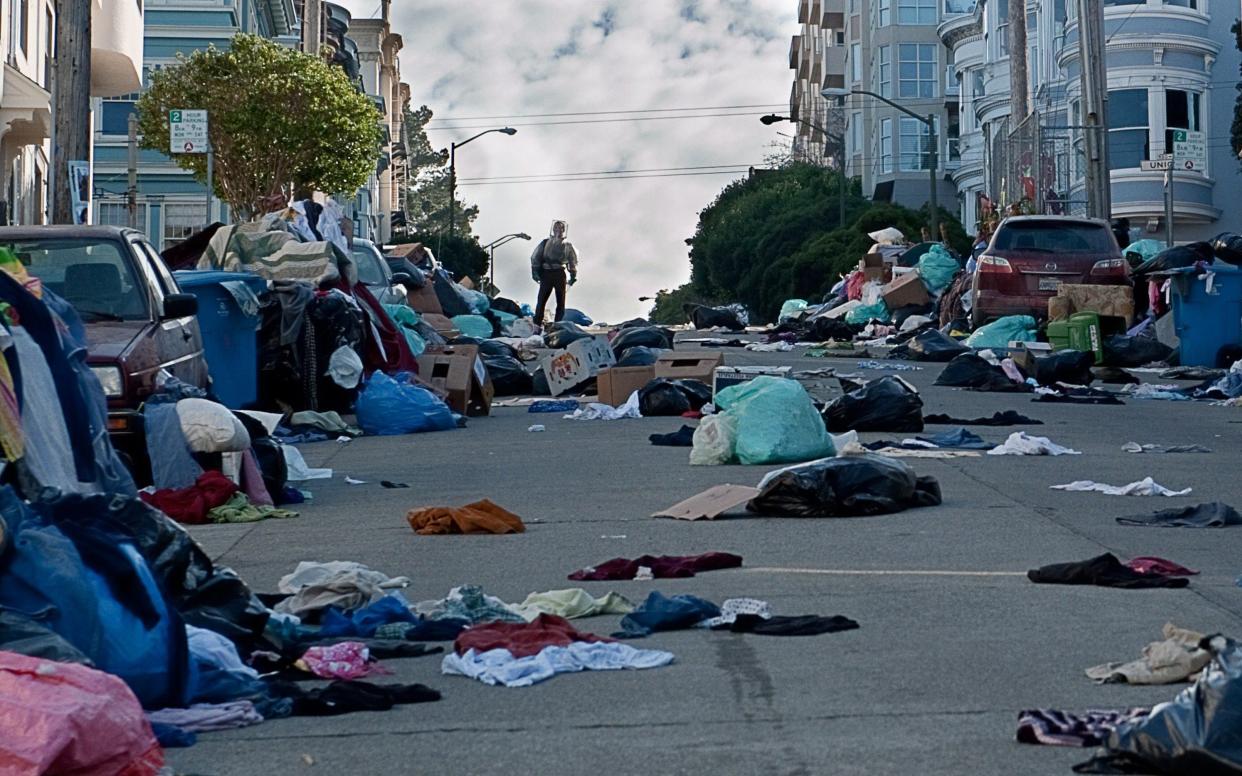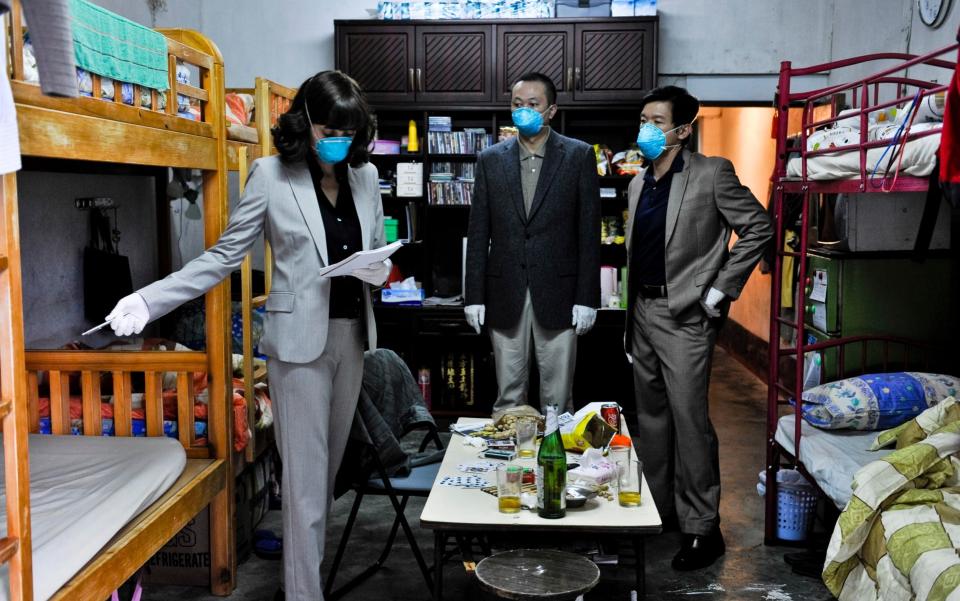How Contagion got coronavirus right – by the film’s science advisor

At Columbia University in New York, W Ian Lipkin is a professor of epidemiology, neurology and pathology. The first is, roughly, the study of how diseases move; the last, their causes and effects. He has just returned from China, for reasons you can guess.
“I’ve been working there since 2003,” he tells me, “whenever there’s an outbreak of an infectious disease. I consult with people at the national and provincial levels.” He didn’t go to Wuhan, coronavirus central, but he self-quarantined for a fortnight on his return to America, just in case.
In his judgement, China is handling the coronavirus outbreak well. “Despite the criticisms about people becoming draconian, it’s waning there, and it’s increasing everywhere else.” The West, by contrast, lacks “aggression”. “In the UK and the US, we have difficulties with national leadership. I won’t go into any more detail than that – you know what I’m talking about.”
But he goes on. “Italy is a disaster. Iran is a disaster. Singapore is just a city-state, so it’s been easier to get control there – they don’t have a lot of surface area to cover. But now, in the US, we have it spreading into the midwest. And in New York, it has exploded.
“In the UK, you have a very dense population. If it gets started in London or Glasgow, it’ll be a disaster.”
In 2009, Lipkin’s expertise in the study of infectious diseases won the interest of Hollywood. He received two approaches at once. One, which he left alone, came from someone he keeps anonymous, but who was “a much bigger name” and “wanted to make something spectacular”.
The other was Scott Z Burns, a screenwriter who’d most recently worked on Steven Soderbergh’s The Informant!. Neither Burns nor Soderbergh were (then) spectacular names, nor did they want to make a spectacular film. Instead, Lipkin recalls, they were “trying to build something that was going to represent the real risks of pandemics”. Lipkin and Burns met for two hours, and by the end, Lipkin was sold.

The film became Contagion. It didn’t lack for stars: Gwyneth Paltrow, Kate Winslet, Matt Damon, Laurence Fishburne, Jennifer Ehle, Jude Law and Marion Cotillard jostle for space on screen. The premise is straightforward: a respiratory illness emerges in China, and soon it travels west. Among its symptoms are coughing, headaches and fever.
The cast are laid out in a neat little plot. Fishburne and Ehle are the scientists leading the response. Law is the “independent journalist” spreading lies online. (This is an equal and parallel “contagion”: with coronavirus, says Lipkin, as in the film, “social media have increased the rate of spread of misinformation, as well as misinformation itself”.) Paltrow, meanwhile, is the cheating wife who gets the blame for the entire thing. The first death occurs in day two; by day 121, 26 million are in the ground.
Contagion was released in 2011, and did modestly at best. On a budget of $60 million (£47 million), it made $135 million (£106 million) worldwide. Lipkin is dry: “Not a blockbuster, shall we say.” Nine years later, however, the audience has arrived. When coronavirus entered the pandemic stage, Contagion became the second-most-rented film of 2020 so far in Apple’s iTunes Store.
Lipkin isn’t surprised. “People are looking at it for clues about what’ll come next – to understand the nature of the public-health response.” But he also points to the film’s fidelity to scientific theory – theoretical scenarios that are now being borne out, uncannily, in a real-life global lab.
“It was the most realistic of the many films made on this topic. It doesn’t offer unrealistic panaceas. Compare it, for example, with Outbreak, where they shoot a monkey with a dart and the next day they have the solution to the world’s problem.
“Ironically,” he adds, “Outbreak has a South American monkey representing an African context. That’s an example of the [typical] lack of realism in films.”

By contrast, Burns and Soderbergh – and their backer, Jeff Skoll, former eBay monarch and head of producers Participant Media – wanted a film that unfolded as the actual nightmare would. Lipkin became their intermediary with disease.
“I was on set for six weeks,” he recalls. “I worked on the concept and the dialogue, helped devise scripts, helped the prop people that designed the various spaces, the costumes, the lab scenes – even the soundtrack. We even designed the virus, the three-dimensional structures.”
This is one of the eeriest things in the film: a rendering of the virus’s structure that silently rotates on screen in front of Fishburne and Ehle’s scientists. It reminds you that such detail is rare in a Hollywood thriller; Ehle doesn’t often toss off references to “viral attachment proteins”. In another scene, she informs her colleagues, and the multiplex viewer, that the virus is “pleomorphic, but tends towards ovoid in shape. I can see some structures on the surface that look like glycoproteins, but there’s nothing morphologically pathognomonic.”
And this, Lipkin admits, is only the dialogue that survived. “Some things were put into the original script that didn’t make it into the final version. No one’s going to watch a four-hour movie.” In the final cut, at least, the details are deftly woven in. Winslet delivers them best, and has the line most people remember: “The average person touches their face two or three thousand times a day… three or five times every waking minute.” This is true.
On set, the nuances of epidemiology had to be unpacked for the cast. “We brought Kate and Jennifer into the lab here, and got them to participate in experiments. And I travelled with Kate to the Centre for Disease Control, where she had the opportunity to see some of these [procedures] in action. We also took the set designers to the BSL-4 laboratories.” (These are the secure facilities in which technicians work with lethal pathogens.)

Among those crew, it was Burns – rather than Soderbergh – who showed more interest in diving in. “Steven didn’t go to any of these things, but Scott did. Screenwriters are under-emphasised. Everyone talks about directors, but it all starts with the writer.”
Lipkin has re-watched Contagion three times. He calls it “one of the things in my career I’m most proud of” – not least because it wasn’t mere entertainment. “It was also a recruitment tool. The number of applications for the CDC’s Epidemic Intelligence Service went up after the film came out.”
And if anything, he adds, his only regrets are being too ambitious in grafting the science onto that thriller script. One concession to Hollywood pacing wasn’t a concession at all – it was an ardent personal goal. “It’s the truncated time-frame for vaccine development. It’s not that bad – it’s not like they have it overnight, they have it within a matter of months. And frankly, that’s something that we should try to do in the real world. But we’re not yet there.”
Contagion is fashioned as a detective story: where the disease came from, meaning who the prime suspect was. In a curiously moral turn, it’s traced to Paltrow’s character, who had a one-afternoon stand in Chicago after visiting a Chinese casino with hygiene best called “poor”. With coronavirus, Lipkin says, this doesn’t matter any more. “Once an infectious disease becomes pandemic, the focus shifts from ‘how did this happen?’ to ‘what can be done?’”

Beside, to Lipkin, coronavirus wasn’t an act of God – it wasn’t even unforeseen. The inevitability of a pandemic has long been priced into public-health research. “We’ve been talking about it for a long time. One of the challenges with public health is that if you do the job well, and you’re fortunate, and you have no outbreak, then nobody pays any attention to what you’re doing. If things go wrong, you’re culpable.”
I ask him whether the mass infection of London – which he earlier called a potential “disaster” – is now destined to come to pass. Lipkin hedges. “Some people say so. I think it’s likely.” But does he expect much from eye-catching measures such as Donald Trump’s travel ban? “I don’t.”
At this point, he thinks that the onus lies on us, and our willingness to acquiesce to the nudges we’re given by every advert, poster and sign above bathroom sinks. “Can we get people to change their habits? Stop touching their faces? Wear gloves when they touch common surfaces? Wash their hands more frequently?”
He doesn’t sound optimistic. “Whether or not people will do those things…” He pauses. “I don’t know.”
Have you watched or re-watched Contagion following the coronavirus outbreak? Share your review in the comments section below.

